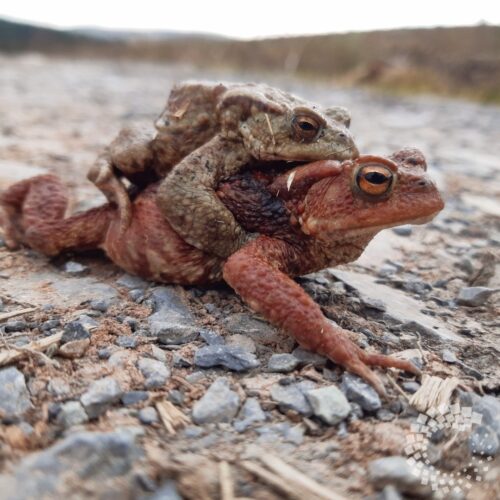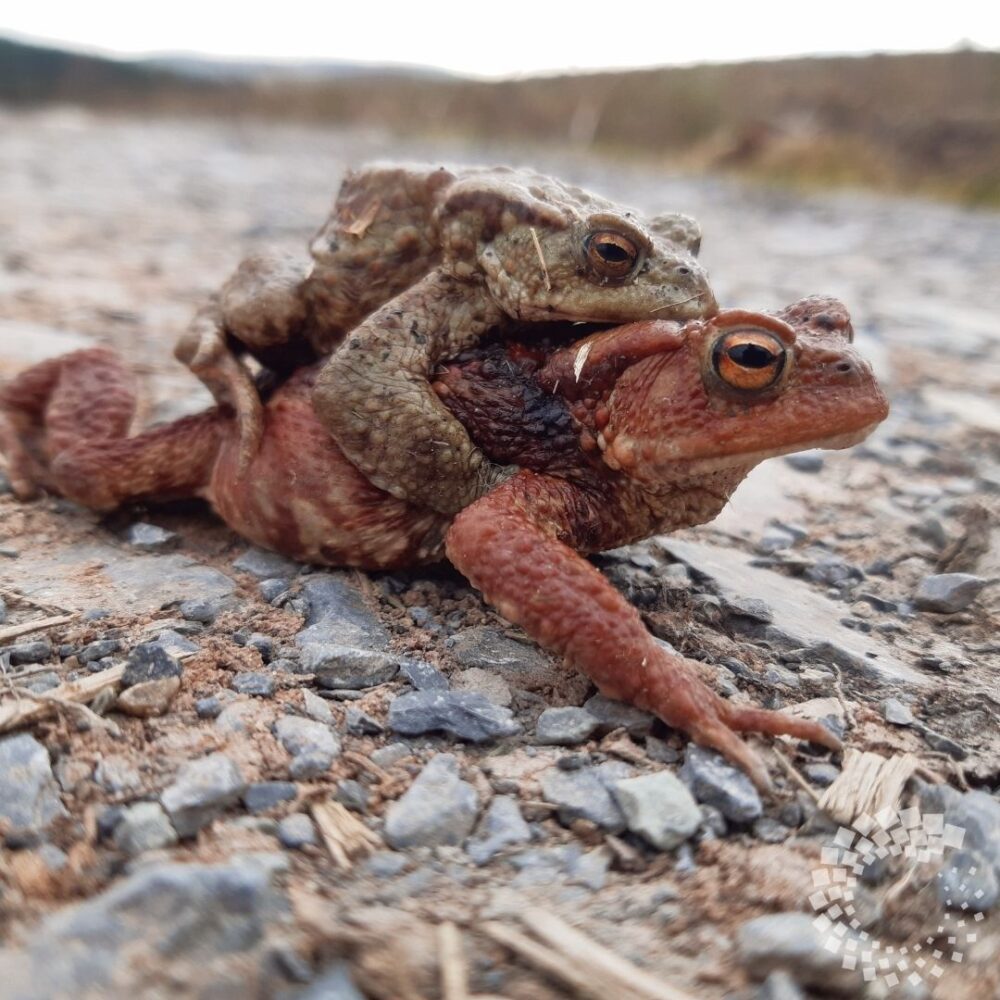
Look out for:
- Breeding activity including spawn of frogs/toads and
newt eggs. Great-crested newt eggs are white/cream
and at 4-5mm are much larger than eggs of others
newts. - Newly hatched newt tadpoles. On close inspection
they can easily be distinguished by the feathery
external gills on either side of the head.
Why?
In the UK all native amphibians are afforded some protection under the Wildlife and Countryside Act 1981. The Great Crested Newt is a highly protected species. The law makes it an offence to intentionally or recklessly kill or disturb this species. It is also an offence to damage or destroy their breeding or resting sites. Favoured habitats include larger, well-established ponds without fish, surrounded by scrub or long grass with log piles for hibernation
DO
✓ STOP work immediately and inform your line manager if you think you have found Great Crested Newts.
DON’T
X Try to handle amphibians unless there is a good animal welfare reason to do so. They are very delicate and handling may cause harm. In the case of Great Crested Newts it is also an offence to handle them without a licence.



